Auberge du Vieux Puits is tucked away in an isolated part of the Corbieres region in the south of France. It is in what might generously be termed the town (its population is about a hundred people) of Fontjoncouse. The restaurant opened in June 1992, the name referring to the “old well” that is still on the property. There are also several bedrooms in a separate building a short walk from the restaurant. Gilles Goujon worked for four years running the fish section of Roger Verge’s Moulins de Mougin near Nice, before moving to Le Petit Nice as sous chef in 1987 and working there for two years. He next moved to a restaurant called l‘Escale, which gained a second star before he left in 1992 to set up Auberge de Vieux Puits. This restaurant gained its first Michelin star in 1997, its second in 2001 and its third in 2010, which it has retained ever since.
The dining room has a quite low ceiling and feels rather rustic, with wood floor, no tablecloths and a slightly dark dining room. Little directed spot lights above each table are switched on when the food arrives in order to better illuminate the plates. This is a smart move given how many diners like to indulge in food photography these days. There was a tasting menu at €205 but we went a la carte. The wine list had labels such as Chateau Montana Silencio 2010 at €70 for a bottle that you can find in the high street for €16, Domain Jacques Carillon Puligny Montrachet 2015 at €160 compared to its retail price of €49, and Didier Dagenau Silex 2013 at €190 for a label that will set you back €112 in a shop. At the prestige end of the list, Guigal La Mouline 2007 was a hefty €990 compared to its retail price of €295, and Coche Dury Les Rougeots 2010 was €1,000 for a wine that has a current market value of €846.
Nibbles were delivered on a little stand, as seems to be the law these days. There was shellfish and veal terrine, a tart of pigs trotters and gribiche sauce (made by emulsifying hard boiled egg yolks and mustard in oil) and a jelly of apple with black pudding. The best of these was the superb pig trotter dish but each of these were marked by bold, distinct flavours (19/20 average).
The meal continued with a local specialty, a bread called fougassse, which is flattened and scored, and in this case came with truffle cream. This was very simple but was gorgeous (19/20). Amuse-bouche was a poached oyster that came with a little sphere of blown sugar containing a scent of smoked oyster. To release the aroma you break the little sphere with a small hammer provided. The oyster itself was served simply with chives and a tartare sauce. I am not much of an oyster expert but my very well travelled oyster-loving dining companions were in various states of ecstasy at the quality of the oyster. The tartare sauce was certainly a revelation, and the little sphere added an element of theatricality (19/20).
There was then a bit of culinary wizardry as what appeared to be a razor clam and a mussel arrived. This being modern high-end dining, things are rarely as they seem. The shell was actually made of seaweed and filled with herbs, razor clam, dried tomatoes and shallots, the “mussel” having similar treatment. What was impressive for me was not the trickery, accomplished though it was, but the dazzling flavour of the razor clam. This can so often be a chewy disappointment, but here was superb, nicely complemented by the rest of the filling and indeed by the edible casing (20/20).
Bread here is bought in, but is supplied by a rather special baker. Henri Poch is a third generation of bakers in his family and was awarded the prestigious Meilleur Ouvrier de France (MOF) in 2000. This competition, run only every four years, is challenging to say the least. There is an excellent documentary on the pastry version of the MOF exam, called “The Kings of Pastry”, if you want to learn more. Mr Poch is based in Perpignan and is the only baker MOF in the region. His bread was, unsurprisingly, superb, with fabulous crust and great texture. It was pretty much as good as bread gets (20/20). Incidentally, Gilles Goujon is himself a MOF, gaining the title in 1996.
Next was a diver-caught scallop that had been cooked a la plancha, along with a Palamos shrimp, a red prawn renowned throughout Spain. These were served with artichoke puree and Tasmania truffle. It appeared that the scallop shell was on the plate too, but the “shell” (which I think was made from lobster-flavoured butter) melted when a sauce of chicken consommé with liquorice was poured over it. Again, what interested me was not the culinary trickery but the flavours. The prawn tasted magnificent and the scallop also had lovely flavour, having good natural sweetness. The earthy artichoke and truffles were a nice balance for the shellfish, and the chicken consommé had deep flavour – a triumph of a dish (20/20).
Next was lobster, served with crystallised courgette flowers with lobster meat tucked underneath, a lobster sorbet and vinaigrette, served on overlapping slices of courgette. I rarely get very excited about lobster (give me a langoustine in preference any day) but this was terrific, perfectly tender and with lovely flavour. The nest of courgette flowers was a pretty way to present the dish, the flavours combined beautifully and it was lovely to eat (20/20).
Further culinary technique was on display in the next dish. A local egg from the local village was poached, yet somehow the yolk was removed and in its place was a black truffle jus when the egg was cut open. The egg,was served on a ring of wild mushroom and truffle puree, topped with Tasmanian truffles, with a truffle sabayon poured over the egg, and on the side a truffle brioche and a dazzlingly intense mushroom cappuccino. This dish has evolved a little since I ate it last and it is certainly very clever, though for me the real star was the mushroom cappuccino on the side (just about 19/20). I also tasted celeriac with black truffle, celeriac jus, bone marrow and a salad sauce, which was a very rich and enjoyable dish, though my dining companion who ordered it suggested that perhaps something with a crisp texture would make it even better. The other starter that I tried was an odd-sounding one of peas (from a nearby supplier called William Saury) with an onion from a nearby village called Lelezignan la Cebe that had been cooked in a crust of salt and cardamom. This came with a few slices of sour strawberry and perfume of cardamom and peach. It is odd to mix fruit with peas but the pickling avoided any jarring sweetness, and the peas were so stunning in flavour that it would barely matter anyway.
For the next course I repeated another dish that I had tried before, red mullet with sweet onion and a generous pouring of classic fish soup with saffron and garlic. This was every bit as good as I recall, the mullet superb, and the fish soup bursting with glorious flavour (20/20). I sampled a somewhat less inspired whole goat dish, which had roast leg, sautéed and griller liver, confit shoulder, along with the liver and heart as well as a wild mushroom gratin and a sauce flavoured with thyme. This was all very nice, but somehow lacked the magic of the red mullet dish (18/20). However what definitely did not lack anything was the main course of “drunken eel”. A black-coloured tuile contained wild mushrooms and eel, resting in an eel sauce, with a sliver of eel served separately to the side. A few vegetables completed the plate. I have eaten quite a lot of eel over the years, but I have never had an eel dish as good as this, even in Japan. The intensity of the sauce was extraordinary (20/20).
The cheeses on the impressively large trolley here are only regional, but due to time constraints we had to skip these. Desserts lived up to the standard of the savoury dishes. A false “lemon” of blown sugar contained lemon sorbet, thyme flower cream and kumquat compote. The skill to make the fake lemon was considerable, as this was not just a yellowish sphere – it really looked like a lemon, including the little bulge at the end. More importantly, the filling was stunning, beautifully balanced between sweetness and acidity, no easy feat when notoriously sharp kumquats are involved (20/20).
I was also really impressed by the taste I had of an elaborate Peruvian chocolate sable with raspberries and vanilla diplomat, along with a chocolate and Earl Gray tea sorbet. Yet the best of the lot was cherry confit in a sugar soufflé with cherry bisque and a tiramisu of marscapone and verbena. The flavour of the cherries in this dish was quite remarkable, the textures lovely – this was a world class dessert (20/20).
With coffee were a few petit fours: a dazzling apple compote, excellent chocolates and superb caneles. Service was excellent, and the bill, with several glasses of wine, came to €230 (£202) each. A typical cost per head might be around £185. This is barely half what you would pay in Paris, or indeed at a lot of three star restaurants these days, yet the food here is absolutely superb. It manages to pull off the very difficult trick of introducing theatricality and fun into the dishes without at any point compromising on flavour and pleasure. Sure, there are tricks aplenty, but the ingredient sourcing is impeccable, and the depth of flavour of many of the dishes is genuinely remarkable. Because this restaurant is off the beaten track and has no PR machine behind it, it is barely known in the English-speaking world. Yet this is without doubt some of the most sophisticated cooking you will find anywhere at the moment.
Further reviews: 13th Aug 2010




















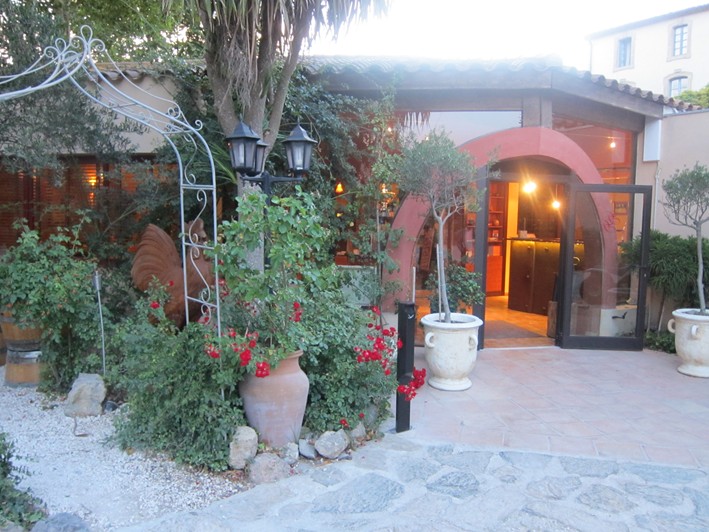

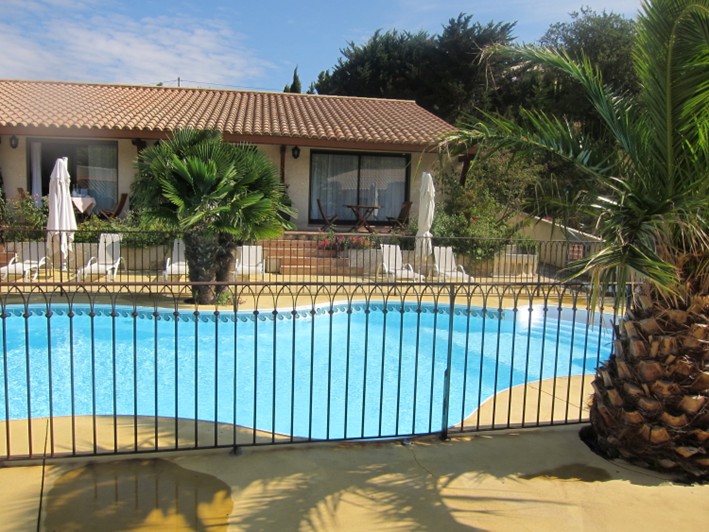

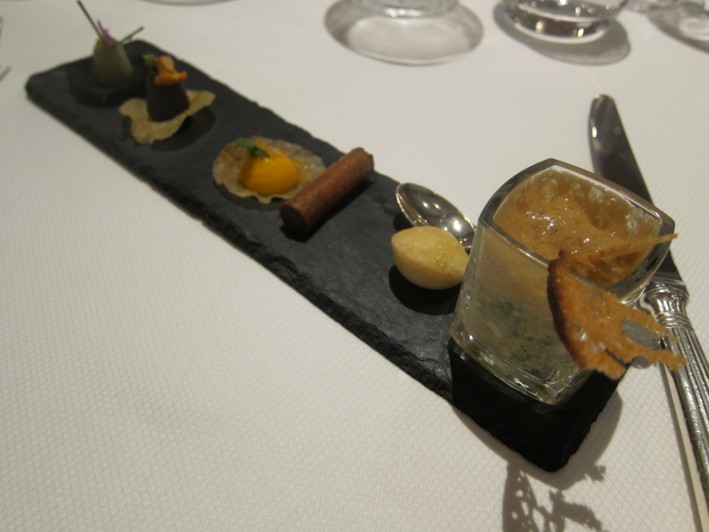
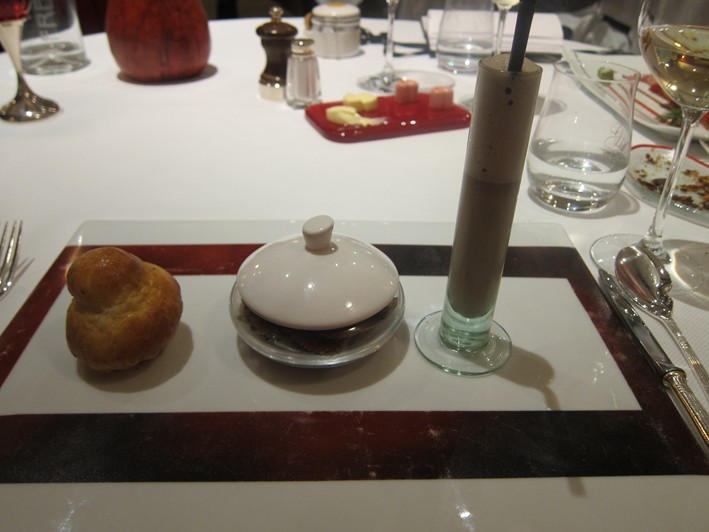



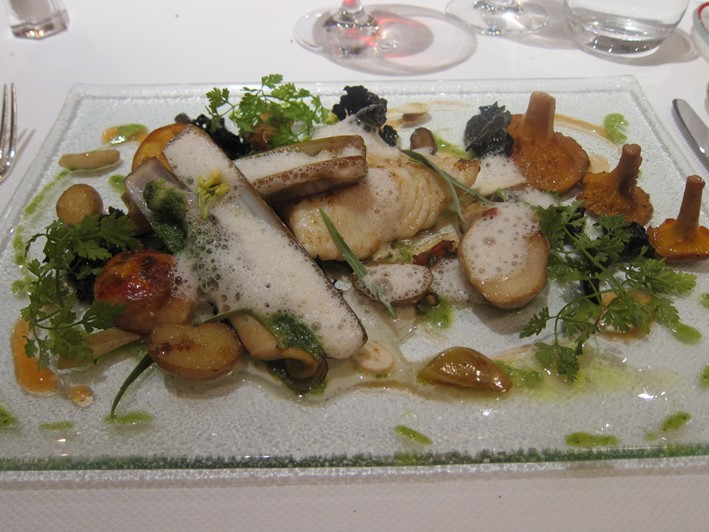
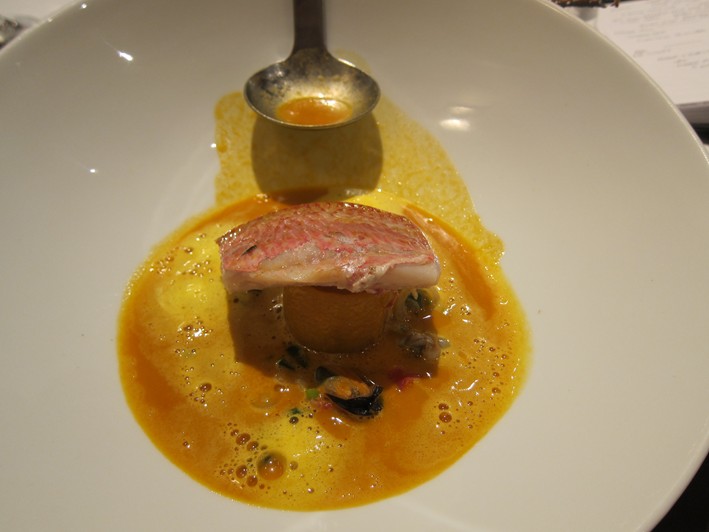
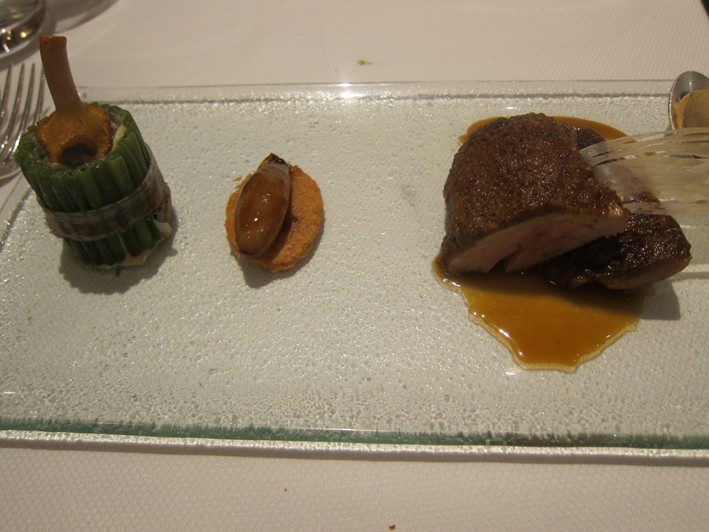

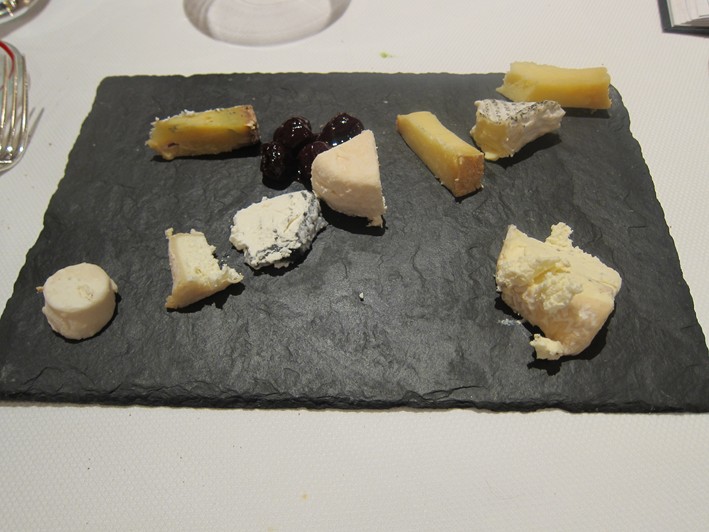
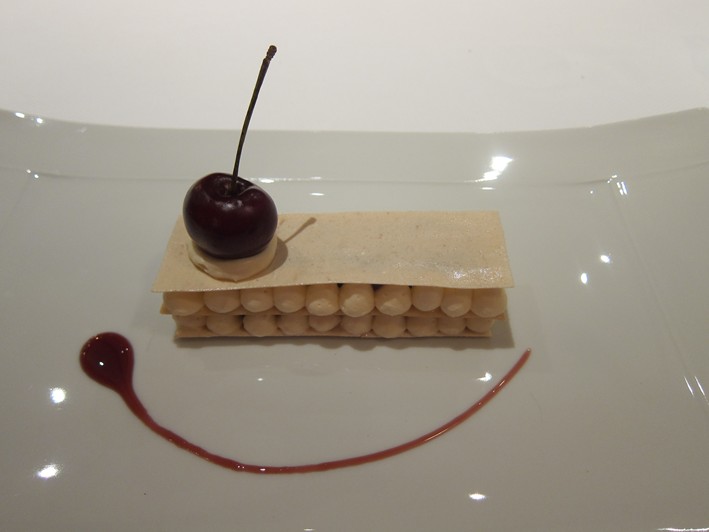



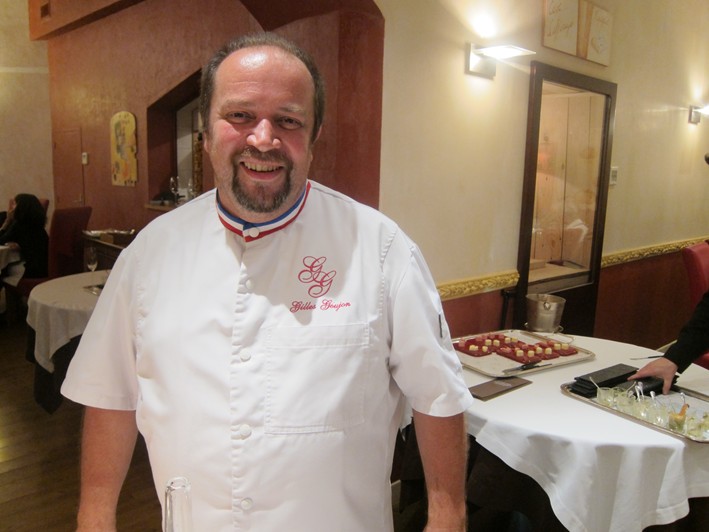

Upnworld
Wow ! Superb review - this exemplifies why you do such a favor to the gourmands of our world. Out of the way countryside location and yet such ambition and excellence - no wonder France rocks ! Only a few other countries like Japan and Germany seem determined to pull off such dedication in the hinterlands.
S Lloyd
I ate at Auberge du Vieux Puits at the beginning of December. Superb service. Loved the feeling of being far from everything. I ordered all their signature dishes (Tourte d’anguille , Vrai faux citron de Menton, Oeuf poule Carrus « pourri » de truffe melanosporum, Filet de rouget barbet). They were very good dishes, indeed. The highlight was a dish of frog leg/Cuckoo flower leaves coulis. Cuckoo flower leaves are wild cress. That was festive on the palate.